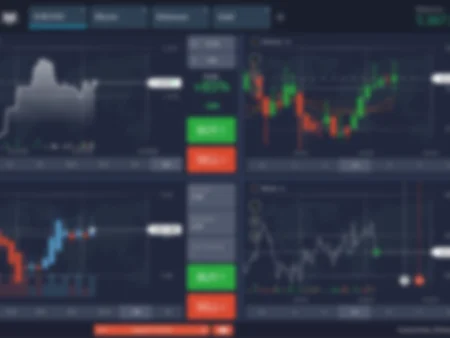Swing Trading Strategy: A Comprehensive Guide to Maximizing Profits
Swing trading is one of the most popular trading strategies in the financial markets, offering a flexible middle ground between long-term investing and day trading. Whether you’re a beginner looking to start trading or an experienced trader seeking to refine your approach, swing trading can offer attractive opportunities. This strategy focuses on capturing short- to medium-term price moves within a trend, allowing traders to potentially profit from both upward and downward market swings.
In this article, we’ll dive deep into what swing trading is, its benefits and drawbacks, and provide tips and tricks to help you master this trading strategy.
What is Swing Trading?
Swing trading is a trading strategy that aims to capture price swings—short-term changes in price direction—within a given trend. Unlike day traders, who close their positions within a single trading day, swing traders typically hold positions for a few days to several weeks, depending on the market momentum and their analysis. The goal is to identify trends early and ride the swings as they move up or down.
Swing trading relies heavily on technical analysis, using charts, indicators, and patterns to predict price movements. It’s a strategy that requires patience, timing, and a keen understanding of market trends.
The Positives of Swing Trading
Swing trading offers several key advantages that make it a favored strategy among traders.
1. Less Time-Intensive
One of the major benefits of swing trading is that it is less time-consuming compared to day trading. You don’t need to monitor the markets constantly throughout the day. Since swing traders hold positions for several days or weeks, you can check in periodically, making it more suitable for those with full-time jobs or other commitments.
2. Potential for Higher Gains
Swing trading allows traders to capture larger price moves than day trading, as the positions are held for a longer period. By riding the broader market swings within a trend, traders can capitalize on significant price movements that often lead to higher profits.
3. Lower Transaction Costs
Because swing traders make fewer trades compared to day traders, transaction costs—such as commissions and fees—are generally lower. Reducing the number of trades can help preserve capital and enhance overall profitability over time.
4. Flexibility in Different Markets
Swing trading can be applied to various markets, including stocks, forex, commodities, and cryptocurrencies. This versatility gives swing traders the flexibility to capitalize on opportunities across different asset classes.
5. Clear Entry and Exit Points
Swing trading strategies typically rely on well-defined entry and exit points based on technical indicators like moving averages, Relative Strength Index (RSI), and Fibonacci retracements. This clarity reduces guesswork and makes it easier to implement disciplined trading plans.
The Negatives of Swing Trading
While swing trading can be profitable, it also comes with its own set of challenges and risks.
1. Market Gaps
Since swing traders often hold positions overnight, they are vulnerable to overnight risk and market gaps—price movements that occur when the market is closed. For example, a stock might close at one price and open significantly higher or lower the next day due to earnings reports or geopolitical events. This can lead to unexpected losses.
2. Requires Patience and Emotional Control
Swing trading requires patience and the ability to withstand market fluctuations. Even if the overall trend is in your favor, short-term volatility can test your resolve. Emotional decision-making during market dips or rallies can lead to premature exits or missed opportunities, which can undermine your strategy.
3. Can Be Affected by False Signals
Swing traders often rely on technical indicators to time their trades, but no indicator is perfect. False signals, such as whipsaws (when the market moves sharply in one direction before reversing), can lead to losing trades. A strong understanding of technical analysis and risk management is essential to avoid these pitfalls.
4. Swing Trading Requires Experience
While swing trading is less stressful than day trading, it still requires a solid understanding of the markets, technical analysis, and market psychology. Beginners might find it challenging to develop the right skills, discipline, and strategies necessary to succeed consistently.
5. Holding Costs
For traders using leverage or margin accounts, there can be holding costs associated with keeping positions open for several days. These costs, such as interest payments on borrowed funds, can eat into your profits if not managed properly.
Tips and Tricks for Successful Swing Trading
To maximize your success as a swing trader, it’s essential to follow a disciplined approach. Here are some tips and tricks that can help you improve your swing trading strategy:
1. Identify the Trend
The foundation of swing trading is trading in line with the prevailing trend. Use technical indicators like moving averages, trendlines, and price action to identify the direction of the market. Once you’ve determined whether the market is in an uptrend, downtrend, or ranging (moving sideways), you can position your trades accordingly.
- Uptrend: Look for buying opportunities when prices retrace to support levels.
- Downtrend: Seek selling opportunities on retracements to resistance levels.
2. Use Technical Indicators to Time Entries and Exits
Technical indicators play a critical role in swing trading. Some of the most popular indicators used by swing traders include:
- Moving Averages: These help smooth out price data to identify trends and reversals. A common strategy is to trade when a short-term moving average crosses above or below a longer-term moving average (e.g., the 50-day moving average crossing the 200-day moving average).
- RSI (Relative Strength Index): The RSI helps identify overbought or oversold conditions in the market. A reading above 70 may indicate overbought conditions, while a reading below 30 suggests oversold conditions, both of which can signal a potential reversal.
- Fibonacci Retracement: Traders use Fibonacci retracement levels to identify possible support and resistance levels, providing possible entry or exit points.
Combining multiple indicators will give you a more accurate picture of when to enter and exit trades.
3. Manage Risk with Stop Losses
One of the key aspects of swing trading is risk management. Always set stop-loss orders to protect your capital in case the trade moves against you. A good rule of thumb is to risk no more than 1-2% of your total capital on a single trade. Stop-losses also help remove emotions from your trading by providing a pre-determined exit point.
4. Monitor News and Earnings Reports
Swing traders need to be aware of key events that could impact their trades. News releases, earnings reports, and economic data can cause sudden price movements. Even though swing traders rely primarily on technical analysis, staying informed about market-moving events is critical to avoid being caught off guard.
5. Be Patient and Don’t Overtrade
Swing trading requires discipline and patience. It’s crucial to wait for the right trading setup and not rush into trades based on emotions or fear of missing out (FOMO). Overtrading can lead to higher transaction costs and more losses, so it’s better to focus on high-quality trades with a strong probability of success.
6. Use a Journal to Track Your Trades
Keep a trading journal to record your trades, including entry and exit points, reasons for entering the trade, and results. This habit will help you analyze your performance, spot patterns, and improve your strategy over time. By reviewing past trades, you can identify strengths and weaknesses and fine-tune your approach.
7. Take Profits Gradually
Swing trading is not about catching the entire trend. Don’t wait for the “perfect” exit point. Consider taking partial profits as your trade moves in your favor and trailing your stop-loss to protect gains. This approach helps you lock in profits while giving your trade the potential to continue moving in the desired direction.
8. Consider the Broader Market Context
It’s important to consider market sentiment and the broader economic context before placing trades. Even if technical indicators suggest a strong trend, macroeconomic factors like interest rates, inflation data, or global events can cause sudden reversals. Aligning your trades with the overall market environment can reduce your risk.
Conclusion: Is Swing Trading Right for You?
Swing trading can be a profitable and flexible strategy for traders looking to capture price movements over a few days or weeks. With its ability to generate gains from both rising and falling markets, swing trading is attractive to traders who cannot monitor the market constantly but still want to benefit from short-term price movements.
However, swing trading comes with its own challenges, including overnight risk, market volatility, and the need for technical analysis skills. Success in swing trading requires patience, discipline, and a solid understanding of market trends.
If you’re looking for a strategy that balances time commitment with profit potential, swing trading may be a good fit. By following the tips and tricks outlined in this article, you can improve your chances of becoming a successful swing trader.
Start slow, practice on a demo account, and gradually develop a strategy that works for you. With the right approach and risk management, swing trading can be a powerful tool for generating consistent returns in the financial markets.













